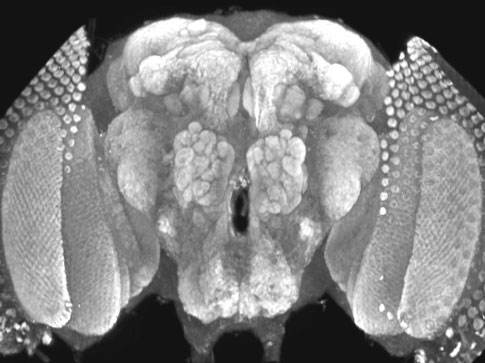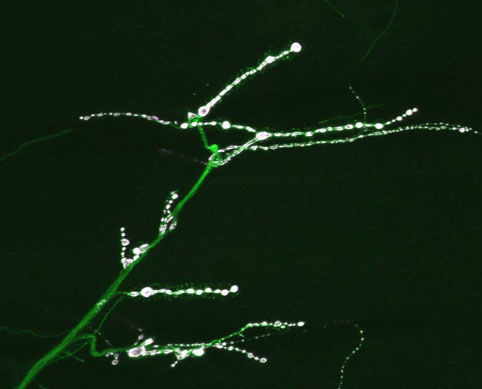 |
|
 |
 |
 |
 |
|
|
Avital A. Rodal, Ph.D. B.Sc. 1997, MIT Ph.D. 2002 University of California, Berkeley My research goal is to understand how membrane traffic is used to modulate the activity of signaling receptors in response to cellular cues. Receptors controlling diverse biological processes exhibit subcellular location-dependent signaling properties as they are internalized from the plasma membrane and trafficked through endosomal compartments. I use a combination of biochemistry, genetics, and cell biology in the Drosophila nervous system to unravel the molecular mechanisms by which signaling receptors that control the architecture of synapses at the neuromuscular junction are regulated by conserved endosomal proteins. My objectives are to identify the internal compartments from which receptors signal, to determine the special properties of those compartments that enable signaling to occur, and ultimately to understand how the membrane traffic machinery itself can be regulated by cellular cues to tune signaling up or down. These trafficking events are implicated in diseases ranging from cancer to mental retardation, neurodegenerative disease and addiction, underlining the health importance of understanding how signal transduction is modulated by intracellular membrane traffic. I have identified mechanisms by which Nervous Wreck (Nwk), a conserved lipid-tubulating/actin regulatory protein, controls endocytic traffic that down-regulates synaptic growth signals. Nwk physically associates with dynamin and other components of the endocytic machinery, and activates actin polymerization together with the small GTPase Cdc42 at an endosomal compartment that drives recycling of receptors to the cell surface. My findings suggest that receptor function is not regulated at the internalization step of endocytosis as had previously been thought, but rather at an internal compartment. To determine how Nwk controls synaptic growth, I identified a conserved binding partner, Sorting Nexin 16 (Snx16), a lipid-binding protein that localizes to endosomes together with growth factor receptors. My genetic experiments show that Snx16 promotes synaptic growth mediated by several signaling cascades, and that this activity is attenuated by Nwk. I have employed live imaging to show that Snx16 and Nwk-containing endosomes transiently interact in nerve terminals to tune down growth signals. This suggests that Nwk and Snx16 could be brought together, in response to activity-dependent or developmental cues, to acutely control membrane dynamics at the interface between endosomal compartments, regulating the output of synaptic growth signaling cascades. This work has identified novel synaptic compartments and new molecular mechanisms for membrane traffic, and provided a cellular context for how and where synaptic growth signals are transduced. |
|